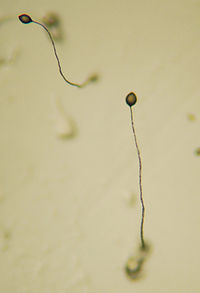
Photo from wikipedia
Identification of ionic liquids with low toxicity is paramount for applications in various domains. Traditional approaches used for determining the toxicity of ionic liquids are often expensive, and can be… Click to show full abstract
Identification of ionic liquids with low toxicity is paramount for applications in various domains. Traditional approaches used for determining the toxicity of ionic liquids are often expensive, and can be labor intensive and time consuming. In order to mitigate these limitations, researchers have resorted to using computational models. This work presents a probabilistic model built from deep kernel learning with the aim of predicting the toxicity of ionic liquids in the leukemia rat cell line (IPC-81). Only open source tools, namely, RDKit and Mol2vec, are required to generate predictors for this model; as such, its predictions are solely based on chemical structure of the ionic liquids and no manual extraction of features is needed. The model recorded an RMSE of 0.228 and R2 of 0.943. These results indicate that the model is both reliable and accurate. Furthermore, this model provides an accompanying uncertainty level for every prediction it makes. This is important because discrepancies in experimental measurements that generated the dataset used herein are inevitable, and ought to be modeled. A user-friendly web server was developed as well, enabling researchers and practitioners ti make predictions using this model.
Journal Title: International Journal of Molecular Sciences
Year Published: 2022
Link to full text (if available)
Share on Social Media: Sign Up to like & get
recommendations!